ROOM 09 マリア・ファーラ / Maria Farrar
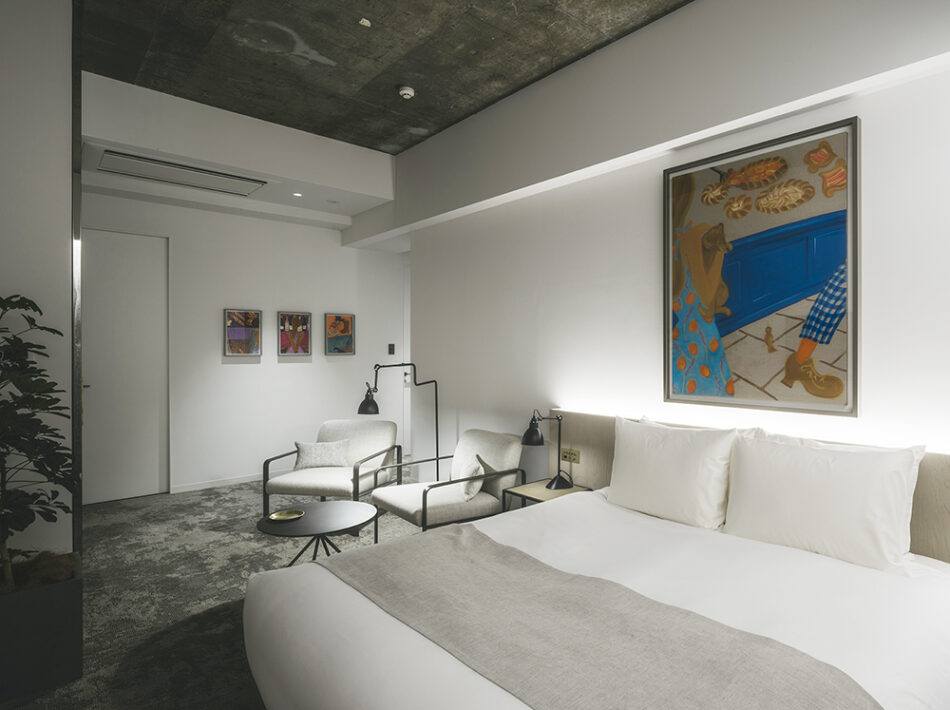
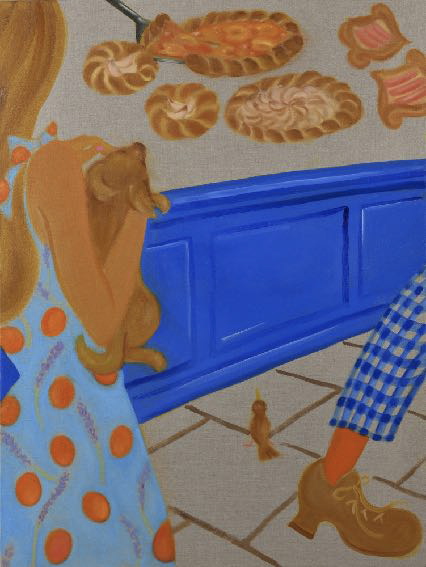
Apricot Tart
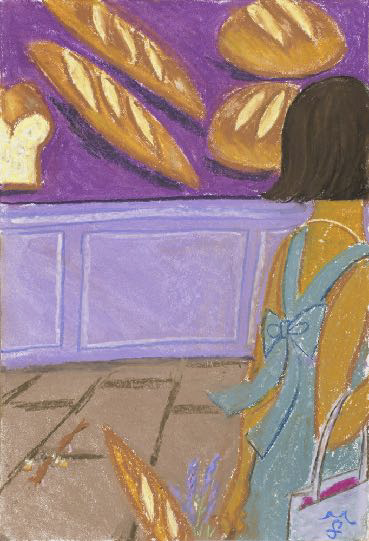
Pain de mie
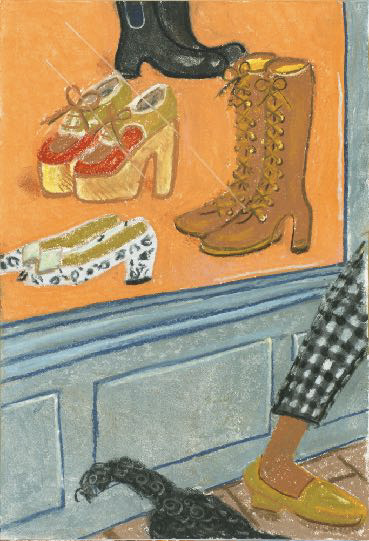
Platforms
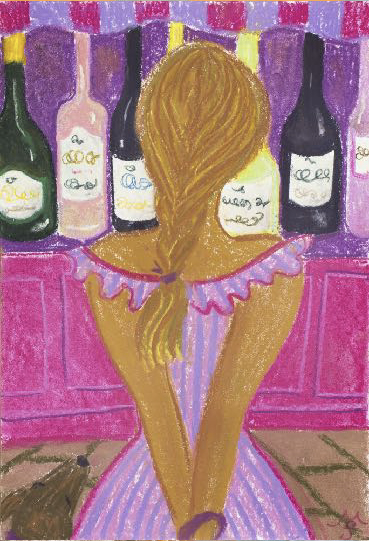
Rosé
マリア・ファーラは1988年にフィリピンでイギリス人の父親とフィリピン人の母親とのあいだに生まれ、幼少期を日本で過ごしたあと、15歳より移り住んだロンドンで制作活動を続けている。これまでの主な個展に「Spring」オオタファインアーツ、上海(2020)、「Too late to turn back now」オオタファインアーツ、東京/シンガポール(2019)、主なグループ展に「Known Unknowns」Saatchi Gallery、ロンドン(2018)等がある。
ファーラの絵画は、それを特徴づける鮮やかな色味や描かれているモチーフから、西洋的な雰囲気を感じさせるが、筆の払い、かすれ・にじみなどの書道的な筆法、太い輪郭線や漫画の一コマのような情景は、日本で培った経験や感性の影響が表れてるようにも見える。
ここに飾られている4点の絵画は、すべてSHIROIYA HOTELのために描かれた作品である。ファーラは「街の活性化」というホテルのコンセプトから、「お部屋の優美なミニマリズムに怖気付かないように」と、カラフルなショーウィンドウのシリーズを提案した。靴やワインボトル、パンなどが並ぶウィンドウの風景は、ショッピングをしている時のワクワクする感覚と、物欲という「欲望を掻き立てる」ような魅力を私たちに覚えさせてくれる。
「何かを所有することと、単にそれを眺めることの分水嶺とも言えるショーウインドウは、所有したいと思う普遍的な気持ちの表れであり、アートが秘める独自の可能性と繋がっている。」とファーラが語るように、純粋に美しいものを楽しむという行為が、そういった欲求から離れたところで存在していることを、 この部屋で作品を眺めることによって感じることができるかもしれない。
「絵画を楽しむためにそれを持ち帰る必要はありません。実物を所有していなくても、重要な何かは自分の中に残るように思います。人びとがわたしの作品からすこしでもポジティブな感覚を受け取って、前橋に活気を与えてくれるのなら、それが、わたしの作品を価値あるものにしてくれるでしょう。」(マリア・ファーラ)
Maria Farrar was born in the Philippines in 1988 to a British father and a Filipina mother. After spending her childhood in Japan, she moved to London when she was fifteen years old, and continues her creative work there today.
Her major solo exhibitions include Spring (Ota Fine Arts, Shanghai, 2020) and Too late to turn back now (Ota Fine Arts, Tokyo/Singapore, 2019). Her major group exhibitions include Known Unknowns (Saatchi Gallery, London, 2018).
In Farrar’s paintings, a distinctively vivid colour palette and motifs hint at a Western atmosphere, but the influence of her experiences in Japan and the sensibilities cultivated in her there seem to show in her brushwork, which draws on techniques from oriental calligraphy such as kasure (dry strokes) and nijimi (bleeding), as well as manga-like compositions and bold outlines. The four paintings presented here were drawn exclusively for Shiroiya Hotel.
Since the concept of the hotel is to “revitalise the city”, Farrar proposed a colourful display window series “to avoid intimidating visitors with elegant minimalism”. Scenes of shop windows with shoes, wine bottles, and bread remind the viewer of the excitement of shopping and the excitement of heightened desire for worldly things.
“Shop windows divide possessing an item from simply gazing at it,” says Farrar. “This represents the universal feeling of wanting to possess something and relates to the unique possibilities hidden within art.”
In this way, to gaze at the works in this room is to feel the distance that the act of purely enjoying beautiful things exists has from such desires.
It is not necessary to take the painting home to enjoy it. Even if you don’t possess the actual work, something important will remain inside you. If people receive even a little positivity from my work and bring vibrancy to Maebashi, that will make my work valuable. —Maria Farrar

